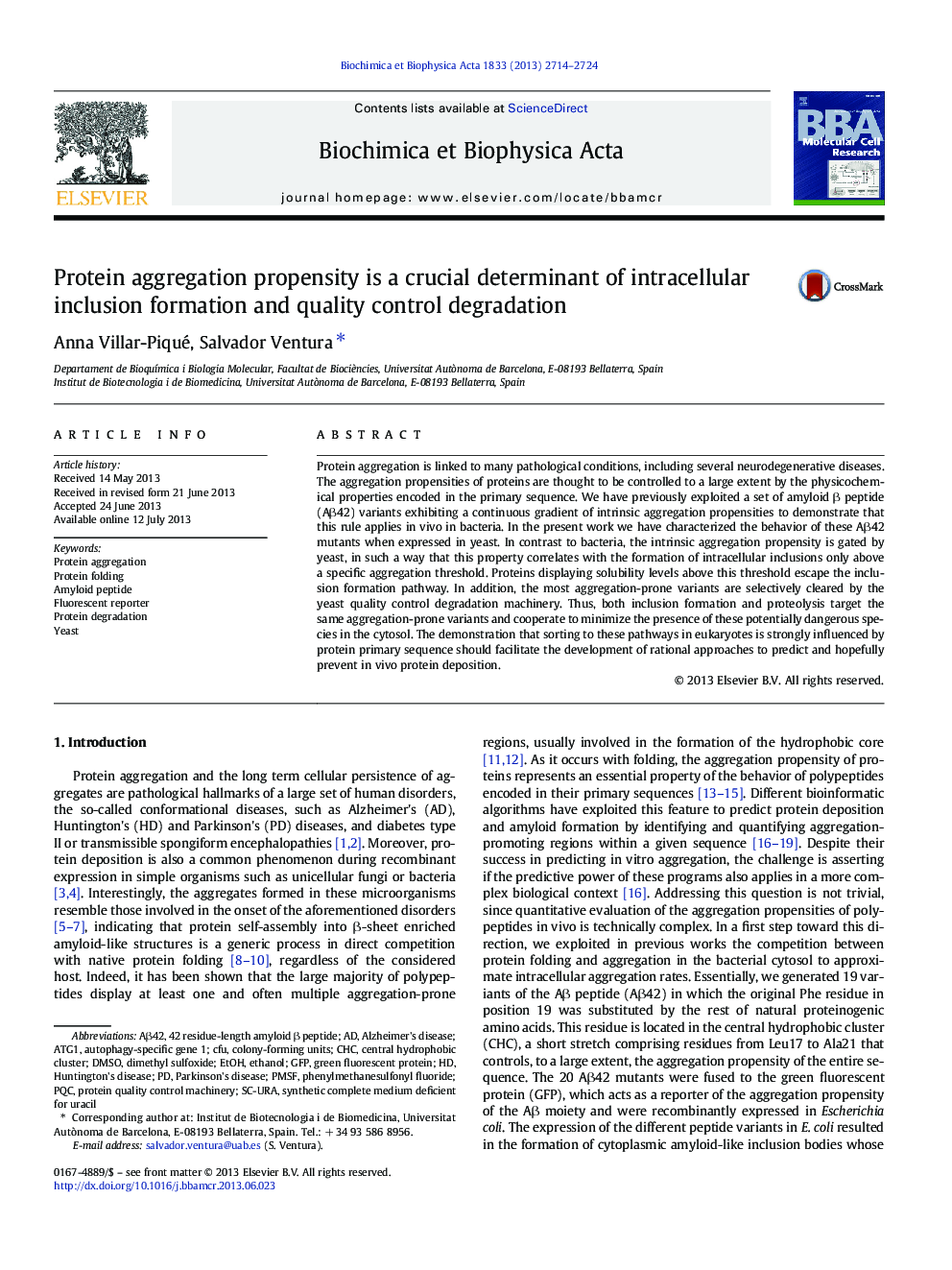| Article ID | Journal | Published Year | Pages | File Type |
|---|---|---|---|---|
| 8303856 | Biochimica et Biophysica Acta (BBA) - Molecular Cell Research | 2013 | 11 Pages |
Abstract
Protein aggregation is linked to many pathological conditions, including several neurodegenerative diseases. The aggregation propensities of proteins are thought to be controlled to a large extent by the physicochemical properties encoded in the primary sequence. We have previously exploited a set of amyloid β peptide (Aβ42) variants exhibiting a continuous gradient of intrinsic aggregation propensities to demonstrate that this rule applies in vivo in bacteria. In the present work we have characterized the behavior of these Aβ42 mutants when expressed in yeast. In contrast to bacteria, the intrinsic aggregation propensity is gated by yeast, in such a way that this property correlates with the formation of intracellular inclusions only above a specific aggregation threshold. Proteins displaying solubility levels above this threshold escape the inclusion formation pathway. In addition, the most aggregation-prone variants are selectively cleared by the yeast quality control degradation machinery. Thus, both inclusion formation and proteolysis target the same aggregation-prone variants and cooperate to minimize the presence of these potentially dangerous species in the cytosol. The demonstration that sorting to these pathways in eukaryotes is strongly influenced by protein primary sequence should facilitate the development of rational approaches to predict and hopefully prevent in vivo protein deposition.
Keywords
Related Topics
Life Sciences
Biochemistry, Genetics and Molecular Biology
Biochemistry
Authors
Anna Villar-Piqué, Salvador Ventura,
